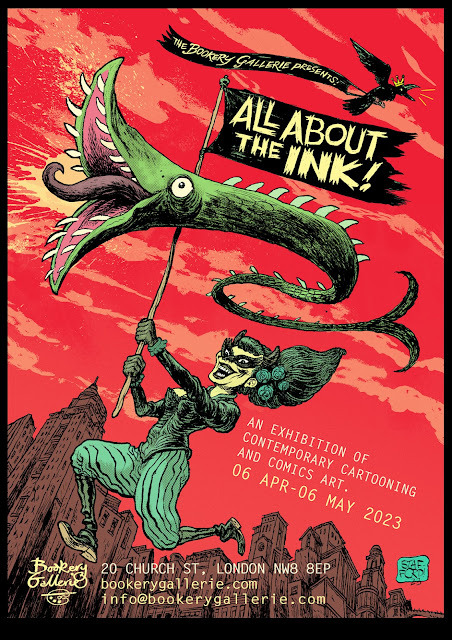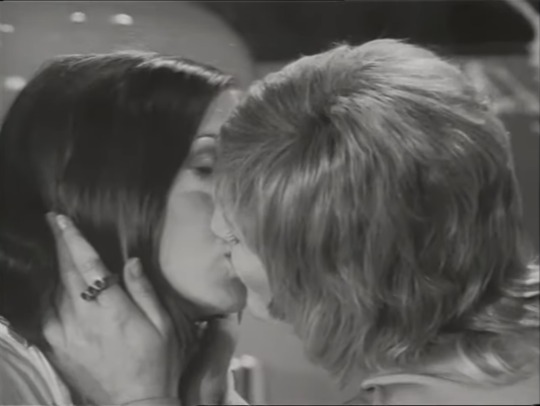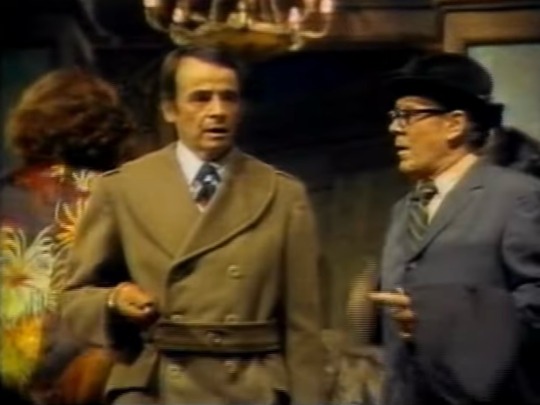#Mark Stafford
Explore tagged Tumblr posts
Text
FOLD lineup adds comic creators Mark Stafford and William Potter to lineup
The first FOLD – Derby Zine Fest is shaping up into an amazing event jam packed with indie creators, coming to Derby on Saturday 13th April 2024

View On WordPress
#Déda#Derby#Derbyshire Zine Library#downthetubes News#Fold Derby Zine Fest#Mark Stafford#QUAD Derby#University of Derby#William Potter
2 notes
·
View notes
Text
#henry viii#polls#feeling spicy#tudor era#could not add more#damn I see a spelling mistake and can't edit it#anne boleyn#kathryn howard#thomas more#thomas cromwell#john fisher#george boleyn#henry norris#william brereton#francis weston#mark smeaton#robert aske#thomas culpepper#francis dereham#jane boleyn#jane parker#anne askew#henry howard#margaret pole#elizabeth barton#william stafford
210 notes
·
View notes
Text
Matt is me when playing games 😂
#newsies#newsies london#newsies uk#uksies#west endies#mukeni nel#Rory Stafford#matt trevorrow#mark samaras
14 notes
·
View notes
Text
The same was found in later reigns; the Crown had inbuilt advantages which an energetic king could exploit when it came to securing land. Anne, countess of Stafford had little option but to accept the new division of the Bohun estates as laid down by Henry V. Joan, dowager countess of Hereford, who had held dower in the Bohun lands since the last earl's death in 1373, died in 1419. Henry V then brought a case for the redivision of the inheritance on the grounds that the profits of his share, inherited from his mother Mary de Bohun, were 100 marks less than those derived from the pourparty of Anne's mother Eleanor. Anne's arguments for accepting the original division were overruled and a new partition drawn up. Although this ostensibly still gave Anne greater profits than Henry, her responsibility for arrears due to the king from Brecon, which was allotted to her, and the growing problems of securing revenues from Welsh lordships, meant that she probably lost on the deal. Anne was also anxious to secure lands held by her father Thomas of Woodstock, and here persistence and determination paid off in the end and she secured the lordships of Oakham and Holderness. It is significant that when her father's attainder was reversed by Henry IV he 'forgot' Anne's claim and granted Holderness to his son Thomas, whose widow refused to surrender the lordship after his death in 1421. It appears that Anne did not secure the lordship until the year before she died.
Jennifer Ward, English Noblewomen in the Later Middle Ages
#rebecca holdorph has a breakdown of the bohun inheritance split in her thesis and henry v is correct that mary got less money than eleanor#(though it is debatable whether it was 'fair' for henry v to have gone after an extra 100 marks when he was king)#(that said anne was very wealthy herself so ¯\_(ツ)_/¯ )#henry v#joan de bohun countess of hereford#anne countess of stafford#mary de bohun#thomas duke of clarence#margaret holland duchess of clarence#thomas of woodstock#henry iv#historian: jennifer ward
3 notes
·
View notes
Text


The 13 year old Sabres shirt from the last time they were in the playoffs
#hockey#sabres#buffalo sabres#tyler ennis#tyler myers#ryan miller#brad boys#jason pominville#tim Connolly#paul Gaustad#Nathan Gerbe#mike grier#jochen hecht#mark mancari#cody McCormick#Steve Montador#rob Niedermayer#derek roy#drew Stafford#thomas vanek#jhonas enroth#Patrick lalime#chris butler#marc andre gragnani#Jordan Leopold#shaone Morrison#andrej sekera#mike weber
3 notes
·
View notes
Text
Gun: Taking On The World (1989)




A&M Records
#my vinyl playlist#gun band#mark rankin#guiliano gizzi#baby stafford#dante gizzi#scott sheilds#a&m records#hard rock#80’s rock#album cover#album art#vinyl records#record cover
0 notes
Text
Full of Beans
JACK AND THE BEANSTALK Gatehouse Theatre, Stafford, Thursday 12th December 2024 Eric Potts is a giant of pantomime and, although he doesn’t grace the stage in this production, the script bears his hallmarks from start to finish. If there’s anything he doesn’t know about pantomime, it probably isn’t worth knowing. This show is just one of ten he has written this year for venues throughout the…

View On WordPress
#David Phipps-Davis#Eric Potts#Gatehouse Theatre#Jack and the Beanstalk#Mark Rhodes#Ollie Hart-Bradford#pantomime#review#Samantha Spragg#Sophie Kandola#Stafford#Theo the Mouse#Wendy Abraham#Wink Taylor
0 notes
Audio
(markmacshow) Another chance to checkout last night’s show on 107.3 Stafford FM. Mark Mac - The Sounds Collective We are very proud to welcome back A Good friend of mine, And a brilliant Dj, An awesome Producer and The Owner of The Excellent South African Deep House Label DeepStitched, He did us an exclusive hour long guest mix all the way from Johannesburg South Africa it’s the amazing 2lani The Warrior. He has been filling dance floors all over the South African club scene since around 1997 and in that time, he has grown with his experiences and his talents 2lani has been one of the main people in South that has made distinct difference in the south African music scene. He has been responsible for expanding Deep house and Underground music throughout South Africa, and way beyond. We are so chuffed that 2Lani has found time to join us on The Sounds Collective this week and he did us an exclusive Brilliant One hour Guest mix... As for me I'm Jumped on the decks for the first hour and I mixed up a selection of brand new promos and brand new releases and a few awesome classics. All of which are coming from Some top quality artists and some outstanding underground labels. The show kicked off at Midnight and went on for two hours. on 107.3 Stafford FM Across the county. Online at www.stafford.fm/ And the new you can find the links for the brand new app at www.stafford.fm/daytimes/mobile-app/?_=412 I do hope you enjoy… MarkMark Mac Hour 1 1 Jordan Reece feat. Mellow Men - Moon Queen (Mark Mac Remix) - Sound Vessel Records 2 Atley Bestoren - Soulful (Original Mix) - DeepClass Records 3 Mark Mac – Across The Globe – 247 Re-edit. 4 Taleman - Second Date (Original 12") – Souksonic 5 Amarno - Structure - Original Mix - Oh! Records Stockholm 6 Marcus Kardos - Delusions - Erdi Irmak Remix - Bekool Records. 7 Lance Kearns - Ahoo Original Mix – Deepwit Recordings 8 Susana Lee, Lafreq, M-Sol DEEP - I Found You – Label M-Sol DEEP 9 Mishandinho – Socotra – Label Blur. Release Date: 13/10/2023 10 Khaaron - Extraneus - Original Mix - Ready Mix Records 11 Ismail Kizil, M-Sol DEEP - Silk Road - Label M-Sol DEEPMark Mac2Lani The WarriorThe Sounds CollectiveStafford FMDeep HouseHouseTechHouseDeepTechnoTechSpaceSpaceHousevibesChillMixDjProducedsmoothTranceClassHouseTunesTracksPromosMixeddeepdeephousemusicdeephousevibesdeephouselovers107.3StaffordFmOrganicHouse
0 notes
Text
At the outset of H. G. Wells’s The War of the Worlds (1898), Wells asks his English readers to compare the Martian invasion of Earth with the Europeans’ genocidal invasion of the Tasmanians, thus demanding that the colonizers imagine themselves as the colonized, or the about-to-be-colonized. But in Wells this reversal of perspective entails something more, because the analogy rests on the logic prevalent in contemporary anthropology that the indigenous, primitive other’s present is the colonizer’s own past. Wells’s Martians invading England are like Europeans in Tasmania not just because they are arrogant colonialists invading a technologically inferior civilization, but also because, with their hypertrophied brains and prosthetic machines, they are a version of the human race’s own future.
The confrontation of humans and Martians is thus a kind of anachronism, an incongruous co-habitation of the same moment by people and artifacts from different times. But this anachronism is the mark of anthropological difference, that is, the way late-nineteenth-century anthropology conceptualized the play of identity and difference between the scientific observer and the anthropological subject-both human, but inhabiting different moments in the history of civilization. As George Stocking puts it in his intellectual history of Victorian anthropology, Victorian anthropologists, while expressing shock at the devastating effects of European contact on the Tasmanians, were able to adopt an apologetic tone about it because they understood the Tasmanians as “living representatives of the early Stone Age,” and thus their “extinction was simply a matter of … placing the Tasmanians back into the dead prehistoric world where they belonged” (282-83). The trope of the savage as a remnant of the past unites such authoritative and influential works as Lewis Henry Morgan’s Ancient Society (1877), where the kinship structures of contemporaneous American Indians and Polynesian islanders are read as evidence of “our” past, with Sigmund Freud’s Totem and Taboo (1913), where the sexual practices of “primitive” societies are interpreted as developmental stages leading to the mature sexuality of the West. Johannes Fabian has argued that the repression or denial of the real contemporaneity of so-called savage cultures with that of Western explorers, colonizers, and settlers is one of the pervasive, foundational assumptions of modern anthropology in general. The way colonialism made space into time gave the globe a geography not just of climates and cultures but of stages of human development that could confront and evaluate one another.
The anachronistic structure of anthropological difference is one of the key features that links emergent science fiction to colonialism. The crucial point is the way it sets into motion a vacillation between fantastic desires and critical estrangement that corresponds to the double-edged effects of the exotic. Robert Stafford, in an excellent essay on “Scientific Exploration and Empire” in the Oxford History of the British Empire, writes that, by the last decades of the century, “absorption in overseas wilderness represented a form of time travel” for the British explorer and, more to the point, for the reading public who seized upon the primitive, abundant, unzoned spaces described in the narratives of exploration as a veritable “fiefdom, calling new worlds into being to redress the balance of the old” (313, 315). Thus when Verne, Wells, and others wrote of voyages underground, under the sea, and into the heavens for the readers of the age of imperialism, the otherworldliness of the colonies provided a new kind of legibility and significance to an ancient plot. Colonial commerce and imperial politics often turned the marvelous voyage into a fantasy of appropriation alluding to real objects and real effects that pervaded and transformed life in the homelands. At the same time, the strange destinations of such voyages now also referred to a centuries-old project of cognitive appropriation, a reading of the exotic other that made possible, and perhaps even necessary, a rereading of oneself.
John Rieder, Colonialism and the Emergence of Science Fiction
#words#hg wells#fiction#science fiction#colonialism and the emergence of science fiction#john rieder
478 notes
·
View notes
Text
London’s Bookery Gallery’s “All About Ink” exhibition opens this weekend
A smashing exhibition of comic art opens at the Bookery Gallery in London this weekend
London’s The Bookery Gallery hosts an inky extravaganza, All About The Ink!, this month, opening on Saturday 8th April and running until 6th May 2023. An exhibition of contemporary cartooning and comics art, the show will be a cavalcade of inky splendour, hanging original works by over 20 cartoonists, alongside digital displays of works in progress, coloured finishes and short films. The…

View On WordPress
#Bookery Gallery#Bryan Talbot#David Hine#Douglas Noble#downthetubes News#Ed Pinsent#Events London#Exhibition#Fraser Geesin#Hunt Emerson#Jason Atomic#Jenny Robins#John Paul Milne#Julian Hanshaw#Kate Charlesworth#Krent Able#Lucy Sullivan#Mark Stafford#Michael S Kane#Oscar Zarate#Rachael Ball#Sarah Gordon#Sean Azzopardi
4 notes
·
View notes
Text
We define hypnosis as a situation in which imaginative suggestions for changes in thoughts, feelings, and actions are provided to a person in a context defined as “hypnosis,” with the expectation that the participant will respond to them in a compelling manner consistent with his or her beliefs about hypnosis, often derived from the broader socio-cultural context. Imaginative suggestions are requests to experience an imaginary state of affairs as if it were real. (Kirsch & Braffman, 2001) They differ from various other types of suggestion (e.g., the placebo effect, sensory suggestions, and the misinformation effect), as indicated by relatively low correlations between responsiveness to these various types of suggestion. Imaginative suggestions can be given with or without the induction of hypnosis. When given in a hypnotic context, they can be administered by a person designated or perceived to be in the role of a “hypnotist” or self-administered, in which case the situation is construed as “self-hypnosis.”
It can be said that someone is “hypnotized” when he or she responds to imaginative suggestions that are presented following a hypnotic induction ritual, which may be elaborate or as simple as merely defining the situation as “hypnosis.” People who are able to respond to the imaginative suggestions that are characteristic of hypnosis are often termed highly hypnotizable or susceptible to hypnosis. However, the very high correlation between responsiveness to these suggestions in hypnosis, and the same suggestions without the induction of hypnosis (r = .67 for behavioral scores; r = .82 for subjective scores; Braffman & Kirsch, 1999), indicates that the term highly suggestible is a more accurate description of these individuals. We propose that the ability to respond to imaginative suggestions depends on the ability to experience or translate the suggested sensations and imaginings into credible and compelling subjective experiences and actions...
...it is crucial to clearly define the events as “hypnotic” in nature, to distinguish the social interaction from everyday communications, and to mark the special occasion as one in which consciousness or capabilities will be optimally and radically expanded beyond the mundane. That is, what is paramount is that the hypnotist presents communications in such a way that they are deemed to be “hypnotic,” as defined by the socio-cultural context...
...The broad skein of cultural beliefs and expectations in which hypnosis is embedded coalesces into a loosely woven script that specifies how events will unfold and what is expected from the participant during hypnosis (Lynn & Green, 2011). In this initial stage, the hypnotist may define hypnosis in various ways, ranging from a state of absorption in suggestions, much like being absorbed in a movie; to an altered state of consciousness; a state of dissociation; and thinking and imagining with suggestions. The particular way in which hypnosis is defined is less important than casting the situation as “hypnotic,” boosting response expectancies (i.e., anticipations of automatic subjective and behavioral responses to particular situational cues) for successful responding and providing a rationale for administering suggestions that are delivered in the next phase. According to Kirsch, hypnotic inductions produce hypnotic responses, much like placebos, by the power of the expectancies they induce and produce alterations in a wide variety of responses, including sexual arousal, anxiety, depression, and pain (Kirsch, 1985, 1991, 1994). When hypnosis is described as a trance, participants are not as responsive and experience diminished subjective effects compared to when hypnosis is defined as merely involving cooperation (Lynn, Vanderhoff, Shindler, & Stafford, 2002). This finding is not particularly surprising, given that many participants experience trepidations regarding what they (mistakenly) believe to be succumbing to a radically altered state of consciousness in which they relinquish control to the hypnotist. Indeed, this widely prevalent belief may predictably engender uneasiness and even outright anxiety and reluctance or resistance to participate fully. Accordingly, early on, the hypnotist often confronts cultural myths and misconceptions head on, informing individuals that they will not lose control, that they can resist suggestions if they choose to do so, and that they will not lose touch with their surroundings.
In this initial information-giving or “preinduction” stage of the hypnotic proceedings, rapport and positive response expectations about hypnosis are established, participant fears are minimized as myths about hypnosis are debunked, and an unspoken “contract” is established that the hypnotist will facilitate the responses of the participant who is willing, motivated, and hopefully able to experience whatever is suggested. This first stage also often involves setting an agenda for hypnosis and removing barriers to optimal responding in which (a) suggestions are tied to goals of research or therapy; (b) motivation is enhanced by emphasizing the appealing features of hypnosis (e.g., relaxation, calm); and (c) expectancies about hypnosis are clarified, often by way of discussion that reveals and addresses lingering concerns about full immersion in the experience of hypnosis.
Lynn, S. J., Laurence, J.-R., & Kirsch, I. (2015). Hypnosis, Suggestion, and Suggestibility: An Integrative Model. American Journal of Clinical Hypnosis
58 notes
·
View notes
Text
At the outset of H. G. Wells's The War of the Worlds (1898), Wells asks his English readers to compare the Martian invasion of Earth with the Europeans' genocidal invasion of the Tasmanians, thus demanding that the colonizers imagine themselves as the colonized, or the about-to-be-colonized. But in Wells this reversal of perspective entails something more, because the analogy rests on the logic prevalent in contemporary anthropology that the indigenous, primitive other's present is the colonizer's own past. Wells's Martians invading England are like Europeans in Tasmania not just because they are arrogant colonialists invading a technologically inferior civilization, but also because, with their hypertrophied brains and prosthetic machines, they are a version of the human race's own future.
The confrontation of humans and Martians is thus a kind of anachronism, an incongruous co-habitation of the same moment by people and artifacts from different times. But this anachronism is the mark of anthropological difference, that is, the way late-nineteenth-century anthropology conceptualized the play of identity and difference between the scientific observer and the anthropological subject-both human, but inhabiting different moments in the history of civilization. As George Stocking puts it in his intellectual history of Victorian anthropology, Victorian anthropologists, while expressing shock at the devastating effects of European contact on the Tasmanians, were able to adopt an apologetic tone about it because they understood the Tasmanians as "living representatives of the early Stone Age," and thus their "extinction was simply a matter of … placing the Tasmanians back into the dead prehistoric world where they belonged" (282-83). The trope of the savage as a remnant of the past unites such authoritative and influential works as Lewis Henry Morgan's Ancient Society (1877), where the kinship structures of contemporaneous American Indians and Polynesian islanders are read as evidence of "our" past, with Sigmund Freud's Totem and Taboo (1913), where the sexual practices of "primitive" societies are interpreted as developmental stages leading to the mature sexuality of the West. Johannes Fabian has argued that the repression or denial of the real contemporaneity of so-called savage cultures with that of Western explorers, colonizers, and settlers is one of the pervasive, foundational assumptions of modern anthropology in general. The way colonialism made space into time gave the globe a geography not just of climates and cultures but of stages of human development that could confront and evaluate one another.
The anachronistic structure of anthropological difference is one of the key features that links emergent science fiction to colonialism. The crucial point is the way it sets into motion a vacillation between fantastic desires and critical estrangement that corresponds to the double-edged effects of the exotic. Robert Stafford, in an excellent essay on "Scientific Exploration and Empire" in the Oxford History of the British Empire, writes that, by the last decades of the century, "absorption in overseas wilderness represented a form of time travel" for the British explorer and, more to the point, for the reading public who seized upon the primitive, abundant, unzoned spaces described in the narratives of exploration as a veritable "fiefdom, calling new worlds into being to redress the balance of the old" (313, 315). Thus when Verne, Wells, and others wrote of voyages underground, under the sea, and into the heavens for the readers of the age of imperialism, the otherworldliness of the colonies provided a new kind of legibility and significance to an ancient plot. Colonial commerce and imperial politics often turned the marvelous voyage into a fantasy of appropriation alluding to real objects and real effects that pervaded and transformed life in the homelands. At the same time, the strange destinations of such voyages now also referred to a centuries-old project of cognitive appropriation, a reading of the exotic other that made possible, and perhaps even necessary, a rereading of oneself.
John Rieder, Colonialism and the Emergence of Science Fiction
684 notes
·
View notes
Text
Gay TV Show Firsts

On February 9th, 1971 the first explicitly gay character “Steve” appeared on television in season 1 episode 5 “Judging Books by Covers” of the American sitcom All in the Family. This episode made its mark by portraying the opposite of the flamboyant stereotype of gay men (that the main character and best friend of Steve held to believe) by representing a gay man who was the complete opposite: masculine, tough, and a former football player. These attributes lead president at the time Richard Nixon to call out the show for “glorifying homosexuality”. Prior to this there were some coded and repressed gay and lesbian characters, but it was not as clear as to them being homosexual as it was on All in the Family.

The first same sex kiss ever on television was in Australian soap opera The Box in the first episode which premiered on February 11, 1974. The character Vicki Stafford (right) is canonically bisexual.

The American sitcom Hot l Baltimore which ran on ABC for one season in 1975, beginning January 24th, featured tv’s first gay couple, they were also main characters. There was much controversy for this at the time and the couple was not allowed to show any physical intimacy. There was also a viewer discretion warning at the beginning of each episode to warn for “mature themes”.

On February 7th, 1991 legal drama L.A. Law featured the first same sex kiss on American network television in the episode “He’s a Crowd”.
Controversy and support erupted and some advertisers removed their advertisements from the broadcast, while GLAAD praised the episode. One of the actresses reported that the kiss was a ratings ploy with no intention to explore a lesbian relationship. Both characters ended up with men.
This episode gave birth to the TV trope “lesbian kiss episode”, where a typically one off episode character that was a lesbian or bisexual woman would kiss a heterosexual female main character, played for shocks, laughs and ratings boots and is never mentioned again or explored further.

On October 20th of that same year Fox’s sitcom Roc featured the first gay wedding in season 1 episode 8 titled “Can’t Help Loving That Man”.
Writer of the episode Jeffrey Duteil said the audience was overwhelmingly supportive and that the network “couldn’t be more pleased” with how it turned out.


The first gay sex scene on television was a bit hard to confirm but I believe it to be from the original UK Queer as Folk which began airing February 23rd, 1999 and ran till February 22nd, 2000.
The US remake of the show which ran from December 3rd, 2000 - August 2nd 2005 was the first American show to feature gay sex. Both shows were very groundbreaking for their explicit portrayal of it.
#lesbian history#gay history#lgbtq#lgbt history#queer#all in the family#the box#hot l baltimore#l.a law#roc#queer as folk#tv/mov/docs#semi long post
69 notes
·
View notes
Note
Does your Sir Pentious celebrates new year? And also since it's his year (2025, a year of snakes), did he do something special on celebrating the new year?
• since sir Pentious was born and lived in a period when Christmas was very popular in victorian England (you can read more about this), he doesn't consider New Year to be a significant holiday for him; also he doesn't celebrate New Year with chinese symbols, it wasn't popular in this timeline
• Pentious has many good memories of Christmas: as a Spencer of Stafford family, he used to take a break from work, go to church and visit brothers' families, and yes, he didn't stay with them for long (nephews perceived him as an uncle who came mostly to eat and talk about boring grown-up things), but during these moments Spencer felt completely safe
• as a consequence of this, Pentious counted down the days and always marked the days of Christmas in notes, just to keep sanity and memories
• of course, he celebrates it without a Christmas tree, but whenever possible he tries to at least rest, sleep, eat something special and take stock of another period of time
• the other members of Charlie's gang listen with great interest to Pentious' stories about how it was celebrated in victorian era (they had their own traditions, which are similar somewhere and completely different in other fields)
• Charlie admires tradition of decorating the house for holiday, hellborns don't do that during the Week of world's creation
#hazbin hotel#hazbin hotel au#hazbin hotel rewrite#asileverse#asileverse ask#sir pentious#hazbin hotel sir pentious
21 notes
·
View notes
Text
A Thing of Beauty
BEAUTY AND THE BEAST Gatehouse Theatre, Stafford, Tuesday 12th December 2023 Beauty and the Beast has increased in popularity as a pantomime since the 1991 release of Disney’s animated feature film and, inevitably, audience perceptions and expectations will be coloured by the pervasiveness of that version. Of course, for copyright reasons at least, there have to be differences in any…

View On WordPress
#Beauty and The Beast#Celyn Cartwright#David Phipps-Davis#Eric Potts#Gatehouse Theatre#Jonathan Alden#Mark Rhodes#Neil Moors#pantomime#review#Stafford#Theo the Mouse#Wendy Abrahams#Wink Taylor
1 note
·
View note
Note
Do you happen to know why bowhead whales have that little line of black dots on their white chins? Once I noticed it it became so distinctive to them, it seems so unique! Is it markings or perhaps just like, white rubbed off by ice or something??
Hi! Great question! Bowhead whales indeed wear some beautiful "bead strings" on their chins. They are true markings, and each dot indicates the location of a chin hair! In some whales you'll see that nearer the tip of the chin, the dots become tiny and plentiful, indicating a hairy muzzle. See for example this whale captured by Todd Mintz:

There is a lot of individual variation though. Some whales have few, very large dots, while others have more, smaller ones. The white chin patch itself can also be very big, other times it is very small (like the whale on the left, photo by Kate Stafford), or entirely washed out gray, making the dots stand out less (like the whale on the right, photo by WWF).


Interestingly it seems the "coding" for the hair spots is always present, as they are even a slightly darker shade than their base greyish black colour. See? You can see the "chin" dots run almost up to this Bowhead's cheeks! (Photo also by Todd Mintz or another Arctic Kingdoms photographer).

And while the dots always follow hairs, the bottom of the white chin marking can have all sorts of funky shapes. It can fade out normally, have quite a jagged edge, or a spotted one, like this whale! (photo courtesy of NMFS)

Why exactly they have this colouration I do not know! It may have some advantage we don't know of yet. But sometimes colouration also just happens, and because it is neither detrimental not advantageous, it just sticks around.
#namtalk#bowhead whale#Balaena mysticetus#Greenland whale#whale#cetacean#colouration#such a cool little detail#especially when you see all the differences between individuals!#great ask!! :D
73 notes
·
View notes